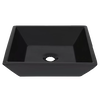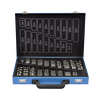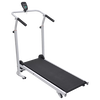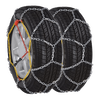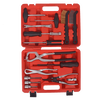12 ways to write good sales copy
1. Use simple language
Did you know that people don't read online? Eye-tracking data from the Nielson Norman Group found that internet users are more likely to scan reading. This is behaviour that hasn't changed over the 23 years of their research!
This means that writing for online readers is all about keeping it simple. Sentences should be short and quick to read. Information needs to be clear and concise.
For example, instead of "it's possible that this product might be good for mothers," write "perfect for mums." Be confident with your words.
2. Write how you speak
Online copy is a world apart from academic writing, books, and magazines. Its closest cousin would be newspapers. If you have noticed, news articles are written extremely to the point, punchy, and with short paragraphs that flow
easily.
So, to use simple language, avoid jargon, long, confusing, and pompous words. Your tone should be conversational, like one friend to another. The most important reasons for this are to build trust and a connection with the
audience.
The easier it is for your website visitors to quickly understand who you are and what you sell, the longer they will stay, browse, and buy.
3. Eye-catching headlines
The first line of your content - the headline - is the most valuable!
Think back to the point about newspapers. Which part grabs your attention? The headline. A powerful and animated headline will entice you to read the article. Consider the boards outside newsagent shops that post the most
interesting headline. They want to pique your interest and pick up a newspaper to find out more.
A headline on the internet is the same. It is the make-or-break moment where you can win or lose your reader's interest. Be a bit creative with your headlines, try to stand out from the crowd, and make yourself noticed.
The striking headlines on the World Wildlife Fund website are alluring. "Eight species making a comeback" inspires hope, respect for the brand's work, and interest to know which species are less endangered.
4. Storytelling
Are you getting the drift with the newspapers? Good stories sell. People love to hear, watch, and read a gripping tale, which is why the film, music, and entertainment industry is so prosperous.
Rather than listing information on every page of your website, use storytelling to engage your readers. This might be a story about how your dropshipping business started or a story about how your products can improve your
customers' lives.
This part needs imagination and being tactful to get it right. It also ties in with your
branding and image.
Airbnb is an example of great storytelling. In this letter from the founders, readers are pulled into the story behind Airbnb and how they experienced the COVID-19 pandemic. The copywriting is compelling and the reader
empathises with the personal, humble, and conversational tone.
5. Adopt a formula
There are several copywriting formulas that are helpful to guide you. These tools are productive ways to keep your writing focused and have a purpose.
Here is our favourite, AIDA. It was developed by an American advertising advocate, Elias St. Elmo Lewis, in 1898. It is an acronym for how to structure your copywriting piece:
Attention - first highlight the reader's problem
Interest - second, captivate the reader with your product offering
Desire - pique their interest
Action - finally, how does the reader buy what you are selling
6. Be credible
This is particularly useful for the blog on your dropshipping website. When publishing how-to articles, statistics, and industry news, for example, make sure to reference reputable sources.
7. Know how to use paragraphs
Similar to the first point when using short sentences and simple words.
To keep visitors to your website engaged, use paragraphs to break up blocks of text. People don't have time to dissect walls of information. A trick is to first write without caring about lengthy sentences and trying to be
perfect, then go back and edit.
Paragraphs of up to five lines are the recommended maximum. Any longer than this and your reader's eyes will get tired.
8. Subheadings are your friend
Organise your paragraphs by using subheadings. Not only does it break down the content so it's easy to digest, but it helps with SEO.
This Apple product description page shows the eye-tracking patterns of a participant in the Nielson Norman Group research (mentioned above). Notice how the eye lingers on the subheadings that are in bold.
9. Bullet points are your friend too
Online readers appreciate bullet points and numbered lists. These are easy to scan quickly. Use these when writing product benefits and features, product options such as colours available, and delivery options.
10. Ditch the semi-colon
Unless you are writing a novel or scientific paper, the semi-colon doesn't have a place in writing online content. In fact, it only creates longer, harder-to-read sentences, not to mention looks stuffy.
11. Don't use justify
What is this? It's that button to format text so each line fills the entire length of your screen. It might look neat at first but it actually makes the eyes work harder to read. Keep your text formatted as 'left align'.
12. Use proper grammar
English in the US, UK, Canada, and Australia is not the same. Be careful with your spelling and also your headings. Americans and Canadians capitalise each word in a heading. In British and Australian English, only the first
word and proper nouns are capitalised.
















